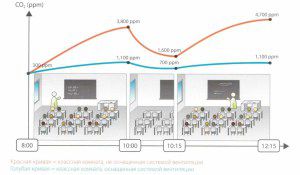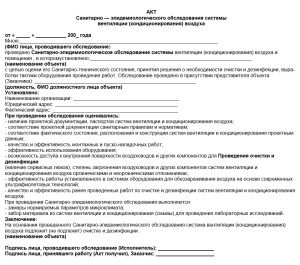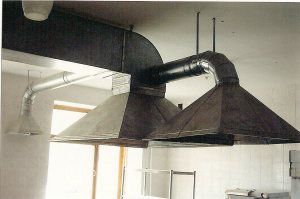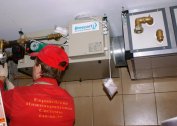Ventilation in schools and kindergartens provides a healthy microclimate necessary for normal well-being and full education of children. The main attention is paid to the microclimate in classrooms, bedrooms, gyms. All ventilation parameters specified in the inspection certificates are regulated by regulations. SNiP 31-06-2009 and SanPiN.
Sanitary and hygienic audits are carried out by employees of the sanitary and epidemiological service. One sample act of checking the effectiveness of ventilation remains in the educational institution, the other in the archives of the SES.
Checking ventilation systems
The effectiveness of the systems is determined before putting the new facility into operation, as well as annually in August before the start of the school year.
A school that has not passed an act to verify ventilation performance to Rospotrebnadzor does not have the right to open a new school year. The task of supervision is to prevent violations in the operation of ventilation systems, as well as to timely detect existing problems. The results are entered into the act of verification of kindergarten or the act of verification of the school.
Preventive sanitary supervision is necessary both when commissioning a new kindergarten or school, and when replacing ventilation equipment, after repair. During the verification of the ventilation system, an act of an established standard is drawn up.
Monitoring of the state of ventilation equipment in laboratories and chemical rooms can be carried out once every 3 months, since here hazardous and harmful substances can be released into the air.
Current control is carried out by the method of measurements using special equipment.
In some cases, photographs taken locally and indicating the condition of the equipment must be attached to the act of checking the ventilation ducts. The established sample of the act of checking the ventilation performance is filled.
Forms of acts confirming the effectiveness of ventilation do not belong to the category of strict reporting.
Checking kindergarten ventilation
According to the requirements of regulatory acts, kindergartens are located in separate buildings. Ventilation in the bedrooms and game rooms is provided in a natural way (corner or through ventilation through open windows). The effectiveness of this method in each case is checked by the employees of Rospotrebnadzor with the obligatory entry of the results in the act of checking the effectiveness of ventilation.
Room humidity
Humidity is one of the most important indicators of the microclimate of a preschool. Therefore, this indicator is always noted in the acts of checking the ventilation of the kindergarten. Too dry air negatively affects the respiratory system of children. While excessive humidity leads to the development of mold, causing allergies and asthmatic phenomena. Therefore, when checking the operation of ventilation in kindergarten, humidity is definitely determined and the result is recorded in the act.
Control over the state of the air exchange systems of kindergartens does not provide for the filling out of a separate form of the act of checking ventilation ducts. All the necessary data to verify the degree of purity and efficiency of their work are entered into one general act of a standard sample.
School ventilation check
Schools use a mixed ventilation system. To provide fresh air in the training rooms, teachers' rooms, library and corridors, air vents are equipped, exhaust air is removed through ventilation ducts in the bathrooms.During control measurements, the performance of natural ventilation are recorded in the acts.
Laboratories, assembly halls, workshops, gyms and canteens need forced outflow of air. Clean air enters the premises through open windows in the hallways and locker rooms. The hood is provided forcibly, by exhaust fans, on ventilation ducts. The ratio of inflow to exhaust should average 2.5: 1.5. The intensity of the system and the cleanliness of the ducts are checked, the results are recorded in the act of checking the ventilation of the school.
Enhanced Ventilation
In laboratories and chemistry rooms, fume hoods and forced air exhaust are equipped. The compliance of the power of the exhaust equipment with the established standards is monitored and recorded by acts of verification of smoke and ventilation ducts.
Enhanced air exchange is also necessary in the catering unit, where a lot of heat and moisture is released during cooking. Usually this is forced ventilation of the supply and exhaust type.
The inflow goes to the dining room, at the rate of 20 cubic meters of air per hour to the seat. The exhaust air is drawn from the kitchen. The air exchange rate in the kitchen is measured during the audit and is entered into the act of checking the effectiveness of ventilation.
If air-curtains are equipped at the entrance to the school (which is typical for large schools), the temperature and humidity indicators are measured in the vestibules and recorded in the ventilation inspection certificates.
When using air heating systems in schools, air recirculation is prohibited. Asbestos-cement pipes are forbidden to use as air ducts. Detected violations are introduced in the model into the act of checking ventilation ducts.





